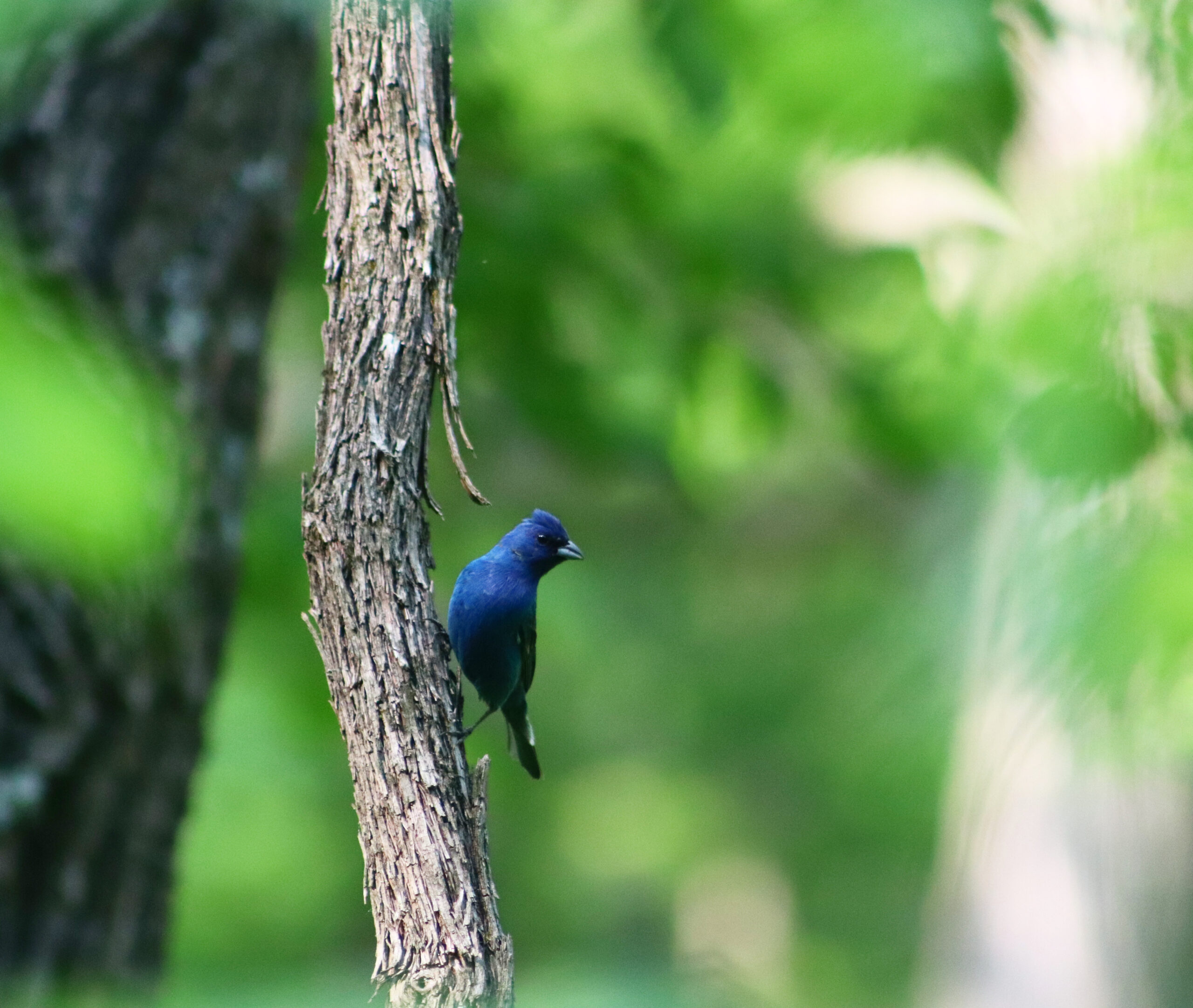by Jacob Crider
Indigo Buntings (Passerina cyanea) is a small and beautiful migratory songbird native to woodlands and grasslands of the Eastern, Central, and Southwestern United States. They overwinter as far south as South America but are more commonly encountered in Central America and the Caribbean during colder months.
Their preferred habitats are open woodlands, savannas, and grasslands along the forest’s edge, where they can dip in and out of cover to feed, build their nests and care for their young. Overgrown fields, wetlands, and Male Indigo Buntings are a vibrant blue color that shimmers in bright sunlight. Females are a light brown color, and juveniles also exhibit brown coloration up until adulthood. Indigo Buntings eat a wide variety of foods including insects, fruits such as serviceberry, elderberry and mulberry, and many grass and wildflower seeds. Occasionally they will visit feeders. Like other songbirds in our temperate region, their diets vary throughout the seasons.
In recent decades, Indigo Buntings have faced population declines due to increased agricultural lands and clearing for livestock. While these areas are sometimes suitable habitat for these birds, historically our region was covered in far more forested land than what exists today, and they were seen in forest clearings known in the East as “barrens.” In these grassy and shrubby areas, they nest low to the ground, normally just around 1-4 feet off the ground. Areas with a mix of forest and grassland are crucial for the survival of Indigo Buntings and other songbirds that also need this diversity of habitat.
At CMNP, Indigo Buntings are quite common, and can be seen throughout the preserve. They are most likely our most common migratory songbird during summer months. They are most abundant in our back meadows and savannas near the frog pond. We even found a nest in the woodland garden! They enjoyed eating the mulberries we have growing along the paths back in May, and at this time of year you may notice young fledglings hopping around within the Ironweeds and Partridge peas growing in the sunny meadow. Indigo Buntings are somewhat conspicuous, flying from tree to tree and singing their three-part song that sounds a little warbler-like. Listen for their calls and songs and keep your eyes out in our meadows to spot them!



